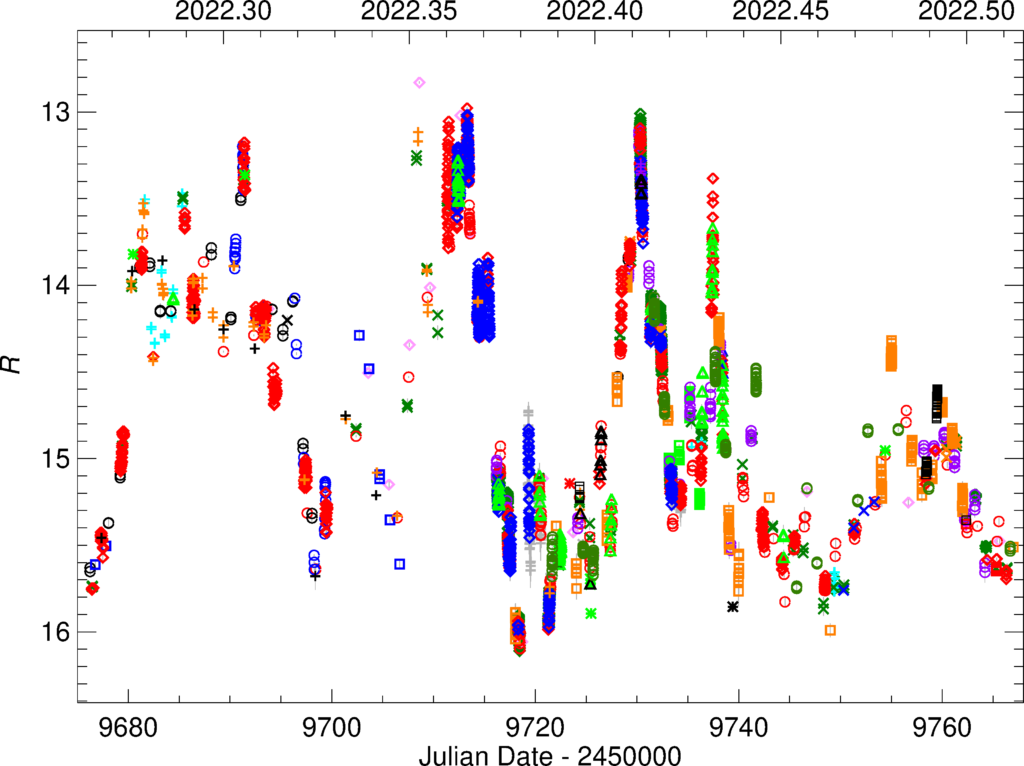by Claudia M. Raiteri
One of the most interesting phenomena in the study of extragalactic sources is the expulsion of gigantic jets of plasma from the so-called “active” galactic nuclei, fueled by the accretion of material on supermassive black holes, up to billions of times the mass of the Sun. Among these active galactic nuclei, the blazars stand out, which, having a jet pointed towards us, allow us to study the physics and structure of extragalactic jets. The plasma particles travel inside the jet at speeds close to that of light, so the radiation we observe undergoes the Doppler beaming effect, because of which we measure a brightness greater than that actually emitted by the source, and shifted towards higher frequencies. Furthermore, the time intervals are also changed, so we measure variability faster than we would in the source reference frame.
We studied one of these objects, S4 0954+65, in a period of extreme variability in the optical band and in gamma rays, during which the source reached its historical maximum brightness. From the analysis of the most rapid flux changes, we were able to deduce that the region of the jet emitting the observed radiation must be about a hundred times smaller than the size of the jet itself, which is estimated to be of the order of hundreds of billions of kilometers. We must therefore think that the jet is fragmented and probably turbulent, since the degree and angle of polarization also vary quickly and unpredictably, indicating an extremely disordered magnetic field. We also verified the excellent correlation of the optical variability with that in gamma rays, which indicates that the emission of both these radiations occurs in the same region of the jet. Finally, we were able to confirm our geometric interpretation of the long-term behaviour of the emission, which would be due to small changes in the emitting region viewing angle (see “Blazar spectral variability as explained by a twisted inhomogeneous jet” by Raiteri et al., 2017, Nature, 552, 374).
The data used for this study, published in Monthly Notices of the Royal Astronomical Society, come from the international collaboration Whole Earth Blazar Telescope (WEBT; https://www.oato.inaf.it/blazars/webt/), coordinated by astronomers from INAF-Osservatorio Astrofisico di Torino.
Article: “Extreme photometric and polarimetric variability of blazar S4 0954+65 at its maximum optical and x-ray brightness levels” by Raiteri, Villata, Carnerero, et al. 2023, Monthly Notices of the Royal Astronomical Society, Volume 526, Issue 3, pp.4502-4513

Optical light curve of S4 0954+65 during the period of strong variability analyzed in the article by Raiteri et al. (2023) .Various symbols and colours highlight data acquired by different telescopes.
